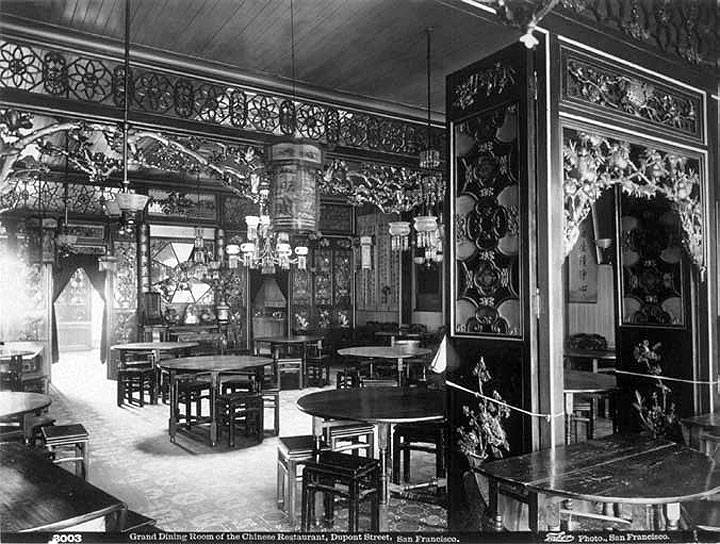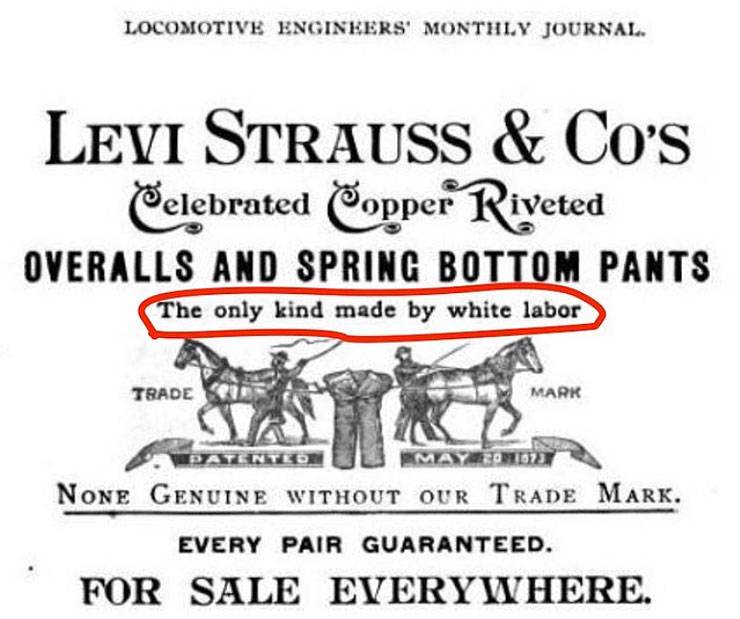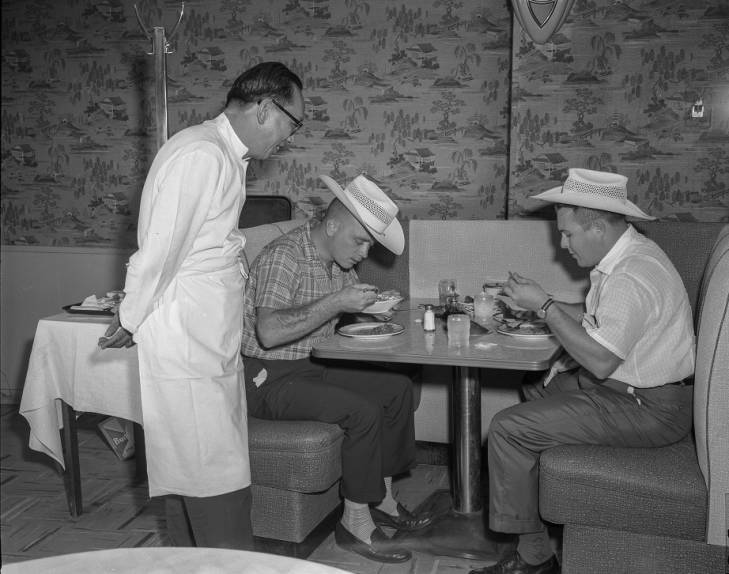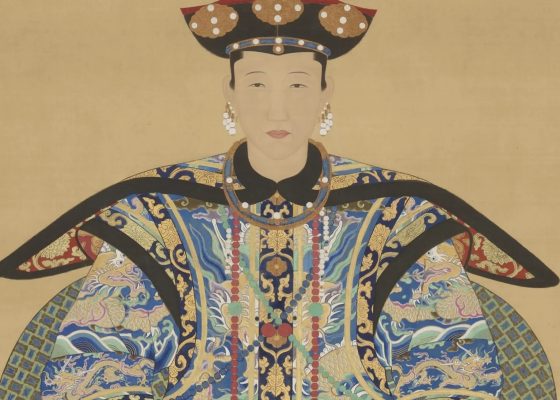
By Bethany Shepard, Lillian Zheng
The air is filled with the aroma of Chinese food on a warm summer evening. You find yourself in front of a small, family-run eatery after following your nose to its source. The proprietor welcomes you with a friendly smile and shows you to a table where you may enjoy your meal.
You cannot help but notice that the ingredients are fresher, and the flavors are more complex than what you’re used to. The proprietor explains that he uses only the highest quality ingredients and prepares each meal with considerable care.
The dinner leaves you feeling pleased and content. As you pay the bill, the owner expresses appreciation for your visit and urges you to return soon.
You leave with the impression that you have just experienced something extraordinary, something that has brought people together for generations. Chinese cuisine may be one of the oldest in the United States, yet it is still thriving today.
Yong Chen, professor of history at the University of California, Irvine, has been studying Chinese food and the early Chinese immigrant society for years. According to him, “speaking of food, we know that this is something that all of us can relate to. And this is a very important way for us to get a sense or develop some understanding of a community… and its sense of identity.”
In the 1850s, the first wave of Asian immigrants arrived in California, and they faced severe persecution. Many of them were Chinese, and the locals did not welcome them.
Many of them were compelled to reside in segregated areas, and their chances of obtaining high-paying jobs were severely constrained. Consequently, we know little about their experiences.
But through food, we can gain insight into the lives of Chinese Americans. Even the types of pots and pans they used in their homes and restaurants reveal something about their culture and history.
Despite all the hurdles they encountered, they persisted and established thriving communities across the nation. The Chinese immigrants of the nineteenth century were a diligent group. They worked in mines, built railroads, and were farmhands. Chinese railroad workers had left everything behind. Their families were back in China. The only thing they had to connect them with their culture was their food. According to Professor Chen, “What is interesting to notice is that Chinese immigrant workers would have a crew of 20 to 30 people at least. And, in each crew, there would be one Chinese chef cooking the food that they were used to.”
They moved around a lot due to their jobs, and they lacked a substantial amount of family and community support. Many of them had family back in China and were working here alone. Therefore, food played an essential role in their life.
Food was a means by which they connected with their society and traditions. It was the only thing upon which they could truly rely.
Without family support, the importance of food increased. It was a means of establishing meaningful relationships with others.

After completing their work for the day, the laborers would frequently visit Chinatown where they could enjoy the Chinese chef’s renditions of familiar dishes and socialize with their friends.
On May 6, 1882, the Chinese Exclusion Act was passed into law. It was the first big immigration restriction bill in the United States. Congress enacted it, and President Chester A. Arthur signed it. It restricted Chinese immigration into the United States. As a result, the Chinese-American community was quite small.
As well as working in the mines, Chinese immigrants were laborers in other fields, like shoemaking, etc. Most of these jobs involved hard manual labor. More than 200 Little Chinatown villages were burned to the ground in the late 19th century as a result of discrimination. Thus, there was much violence, and the Chinese were treated harshly and made to live in segregated regions despite their intellect.
This was due to the fact that the majority of white people at the time harbored antipathy for Chinese immigrants. This time period is sometimes overlooked or skimmed over, but it remains an essential element of American history. The burning of America’s Chinatowns was a terrible event that had a significant influence on the Chinese population in the United States.
At the beginning of the 20th century, Chinese cuisine started gaining popularity in the United States.
During World War II, when China was a member of the Allied Nations, Congress abolished all exclusion measures in 1943. However, limitations still existed, restricting annual Chinese immigration to 105 people. Chinese people born abroad also gained the opportunity to seek citizenship.
Restaurants were more than just places to eat for many Chinese immigrants. They were also venues to meet new people and mingle. In fact, for several individuals, the only time they saw their cousins or uncles was at restaurants. And because space was typically limited in Chinese communities, eateries were often popular sites for afternoon naps.
Chinese people are not the only ones who brought their rich food traditions with them to the U.S. But their experience has been unique for various reasons. Italian individuals introduced their passion for food to the American culture as well. There are currently Italian restaurants in every state. And many of them enjoy considerable success.
The majority of Italian immigrants came from lower-class origins and were frequently discriminated against by Anglo-Europeans. However, they were still deemed white, which provided them with certain benefits over Chinese immigrants. In contrast, Chinese immigrants were not deemed white and hence were not eligible for citizenship. This resulted in fewer Chinese immigrants entering the United States.

The restaurant business was one of the two business options for Chinese Americans for a long period of time. According to Professor Chen, “It’s one of the reasons why food is so important to them. A lot of Chinese entered the cooking industry, not because they were very good at it, not because they were great foodies. It was an economic necessity.” They did it to earn a livelihood. A restaurant was one of the few businesses a Chinese-American could own. And it certainly wasn’t easy. Running a restaurant was a lot of work.
In 1965, Chinese immigration was altered to be on an equal footing with that of all other nations, although they still experienced discrimination.
It’s no secret that Chinese Americans place a high value on food. In fact, more than 10% of the population today is working in the restaurant industry. And because there are over 5 million Chinese Americans in the United States, the community is very diverse.

However, their love of Chinese food chains is one of the few things that unites Chinese Americans. It is something to which they can all connect, notwithstanding their geographical disparities.
Food has always been an integral aspect of Chinese culture, but for Chinese Americans, its significance has increased due to the struggles they faced in this new world.
Nowadays, it is a means for remembering their story, connecting with their ancestry, and building a sense of community.





Cancel anytime


Using our website
You may use the The Middle Land website subject to the Terms and Conditions set out on this page. Visit this page regularly to check the latest Terms and Conditions. Access and use of this site constitutes your acceptance of the Terms and Conditions in-force at the time of use.
Intellectual property
Names, images and logos displayed on this site that identify The Middle Land are the intellectual property of New San Cai Inc. Copying any of this material is not permitted without prior written approval from the owner of the relevant intellectual property rights.
Requests for such approval should be directed to the competition committee.
Please provide details of your intended use of the relevant material and include your contact details including name, address, telephone number, fax number and email.
Linking policy
You do not have to ask permission to link directly to pages hosted on this website. However, we do not permit our pages to be loaded directly into frames on your website. Our pages must load into the user’s entire window.
The Middle Land is not responsible for the contents or reliability of any site to which it is hyperlinked and does not necessarily endorse the views expressed within them. Linking to or from this site should not be taken as endorsement of any kind. We cannot guarantee that these links will work all the time and have no control over the availability of the linked pages.
Submissions
All information, data, text, graphics or any other materials whatsoever uploaded or transmitted by you is your sole responsibility. This means that you are entirely responsible for all content you upload, post, email or otherwise transmit to the The Middle Land website.
Virus protection
We make every effort to check and test material at all stages of production. It is always recommended to run an anti-virus program on all material downloaded from the Internet. We cannot accept any responsibility for any loss, disruption or damage to your data or computer system, which may occur while using material derived from this website.
Disclaimer
The website is provided ‘as is’, without any representation or endorsement made, and without warranty of any kind whether express or implied.
Your use of any information or materials on this website is entirely at your own risk, for which we shall not be liable. It is your responsibility to ensure any products, services or information available through this website meet your specific requirements.
We do not warrant the operation of this site will be uninterrupted or error free, that defects will be corrected, or that this site or the server that makes it available are free of viruses or represent the full functionality, accuracy and reliability of the materials. In no event will we be liable for any loss or damage including, without limitation, loss of profits, indirect or consequential loss or damage, or any loss or damages whatsoever arising from the use, or loss of data, arising out of – or in connection with – the use of this website.
Last Updated: September 11, 2024
New San Cai Inc. (hereinafter “The Middle Land,” “we,” “us,” or “our”) owns and operates www.themiddleland.com, its affiliated websites and applications (our “Sites”), and provides related products, services, newsletters, and other offerings (together with the Sites, our “Services”) to art lovers and visitors around the world.
This Privacy Policy (the “Policy”) is intended to provide you with information on how we collect, use, and share your personal data. We process personal data from visitors of our Sites, users of our Services, readers or bloggers (collectively, “you” or “your”). Personal data is any information about you. This Policy also describes your choices regarding use, access, and correction of your personal information.
If after reading this Policy you have additional questions or would like further information, please email at middleland@protonmail.com.
PERSONAL DATA WE COLLECT AND HOW WE USE IT
We collect and process personal data only for lawful reasons, such as our legitimate business interests, your consent, or to fulfill our legal or contractual obligations.
Information You Provide to Us
Most of the information Join Talents collects is provided by you voluntarily while using our Services. We do not request highly sensitive data, such as health or medical information, racial or ethnic origin, political opinions, religious or philosophical beliefs, trade union membership, etc. and we ask that you refrain from sending us any such information.
Here are the types of personal data that you voluntarily provide to us:
As a registered users or customers, you may ask us to review or retrieve emails sent to your business. We will access these emails to provide these services for you.
We use the personal data you provide to us for the following business purposes:
Information Obtained from Third-Party Sources
We collect and publish biographical and other information about users, which we use to promote the articles and our bloggers who use our sites. If you provide personal information about others, or if others give us your information, we will only use that information for the specific reason for which it was provided.
Information We Collect by Automated Means
Log Files
The site uses your IP address to help diagnose server problems, and to administer our website. We use your IP addresses to analyze trends and gather broad demographic information for aggregate use.
Every time you access our Site, some data is temporarily stored and processed in a log file, such as your IP addresses, the browser types, the operating systems, the recalled page, or the date and time of the recall. This data is only evaluated for statistical purposes, such as to help us diagnose problems with our servers, to administer our sites, or to improve our Services.
Do Not Track
Your browser or device may include “Do Not Track” functionality. Our information collection and disclosure practices, and the choices that we provide to customers, will continue to operate as described in this Privacy Policy, whether or not a “Do Not Track” signal is received.
HOW WE SHARE YOUR INFORMATION
We may share your personal data with third parties only in the ways that are described in this Privacy Policy. We do not sell, rent, or lease your personal data to third parties, and We does not transfer your personal data to third parties for their direct marketing purposes.
We may share your personal data with third parties as follows:
There may be other instances where we share your personal data with third parties based on your consent.
HOW WE STORE AND SECURE YOUR INFORMATION
We retain your information for as long as your account is active or as needed to provide you Services. If you wish to cancel your account, please contact us middleland@protonmail.com. We will retain and use your personal data as necessary to comply with legal obligations, resolve disputes, and enforce our agreements.
All you and our data are stored in the server in the United States, we do not sales or transfer your personal data to the third party. All information you provide is stored on a secure server, and we generally accepted industry standards to protect the personal data we process both during transmission and once received.
YOUR RIGHTS/OPT OUT
You may correct, update, amend, delete/remove, or deactivate your account and personal data by making the change on your Blog on www.themiddleland.com or by emailing middleland@protonmail.com. We will respond to your request within a reasonable timeframe.
You may choose to stop receiving Join Talents newsletters or marketing emails at any time by following the unsubscribe instructions included in those communications, or you can email us at middleland@protonmail.com
LINKS TO OTHER WEBSITES
The Middle Land include links to other websites whose privacy practices may differ from that of ours. If you submit personal data to any of those sites, your information is governed by their privacy statements. We encourage you to carefully read the Privacy Policy of any website you visit.
NOTE TO PARENTS OR GUARDIANS
Our Services are not intended for use by children, and we do not knowingly or intentionally solicit data from or market to children under the age of 18. We reserve the right to delete the child’s information and the child’s registration on the Sites.
PRIVACY POLICY CHANGES
We may update this Privacy Policy to reflect changes to our personal data processing practices. If any material changes are made, we will notify you on the Sites prior to the change becoming effective. You are encouraged to periodically review this Policy.
HOW TO CONTACT US
If you have any questions about our Privacy Policy, please email middleland@protonmail.com
The Michelin brothers created the guide, which included information like maps, car mechanics listings, hotels and petrol stations across France to spur demand.
The guide began to award stars to fine dining restaurants in 1926.
At first, they offered just one star, the concept was expanded in 1931 to include one, two and three stars. One star establishments represent a “very good restaurant in its category”. Two honour “excellent cooking, worth a detour” and three reward “exceptional cuisine, worth a
Thank you for your participation,
please Log in or Sign up to Vote

123Sign in to your account